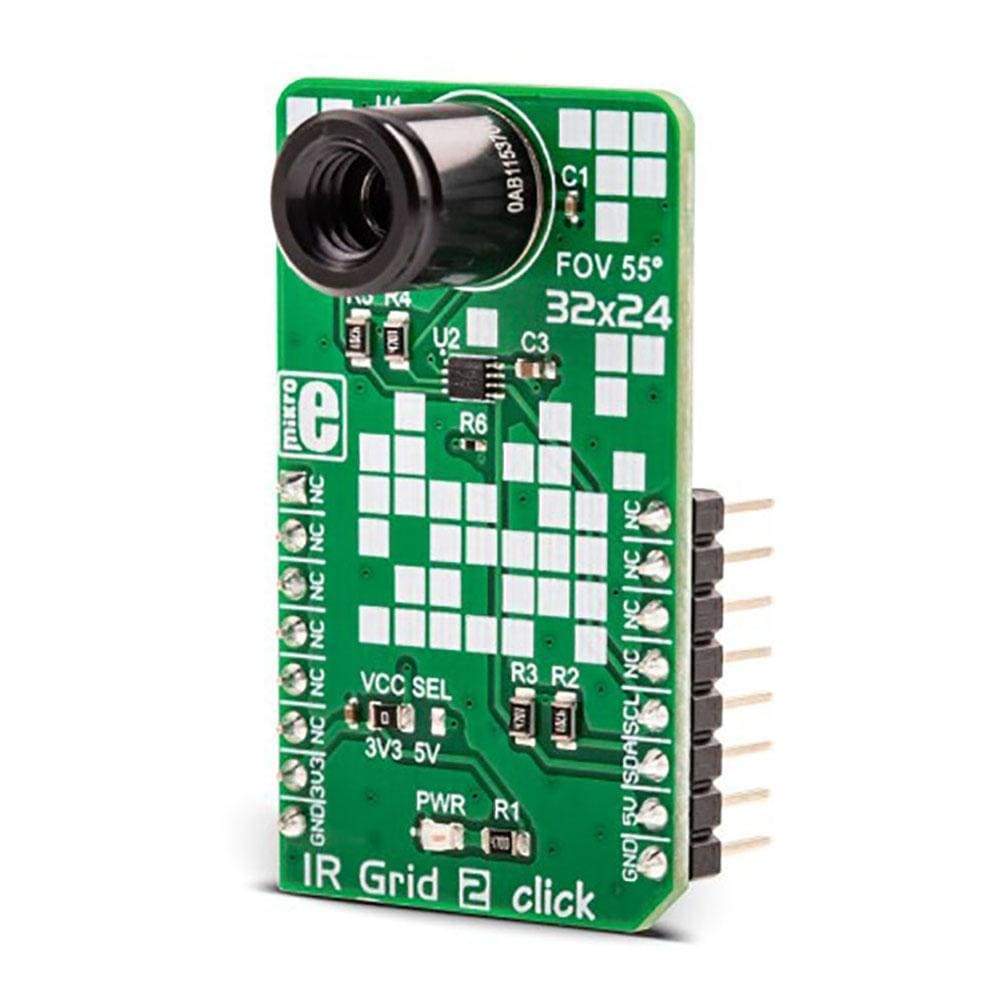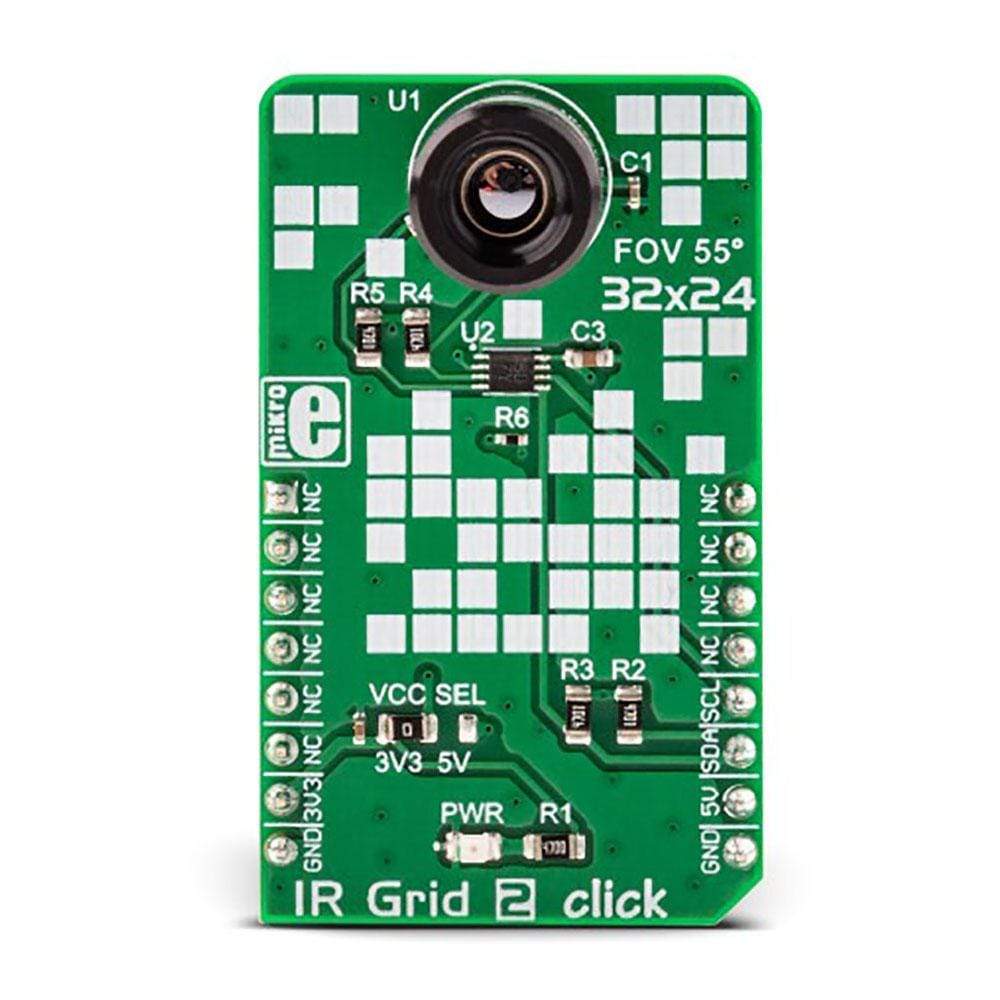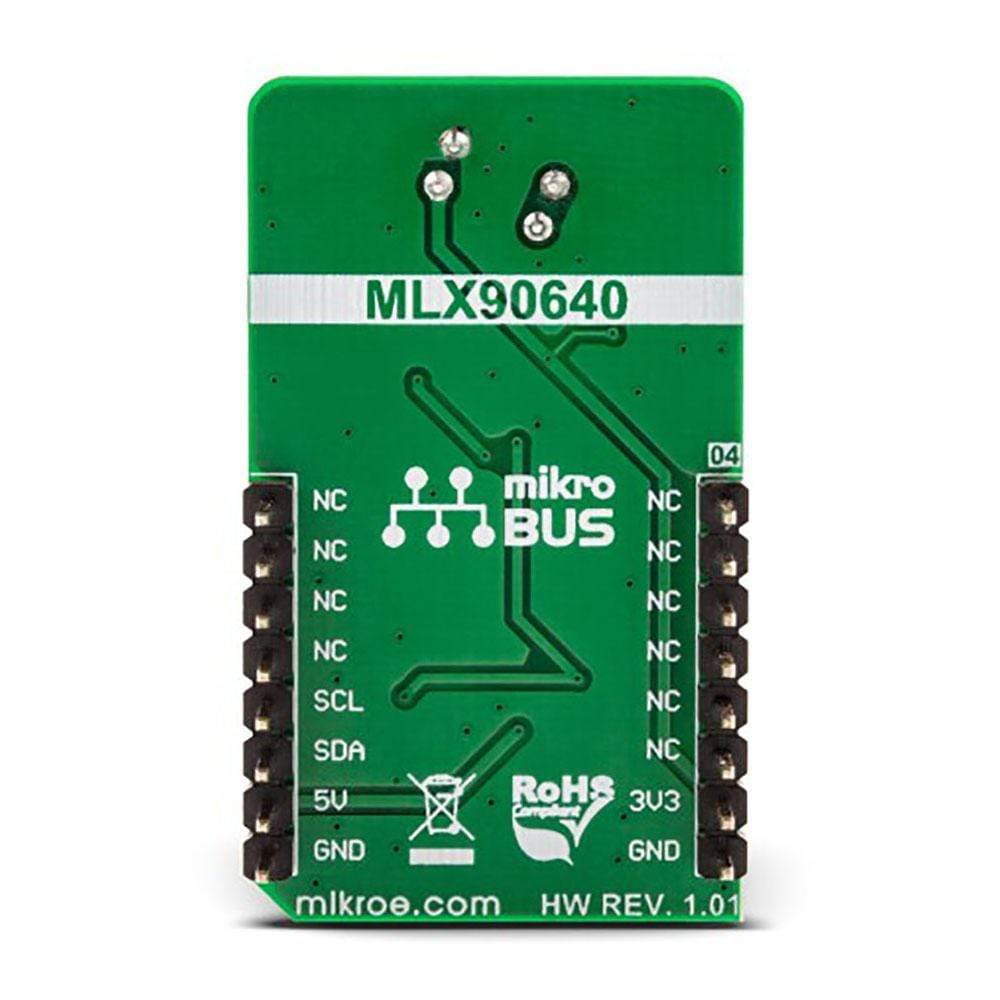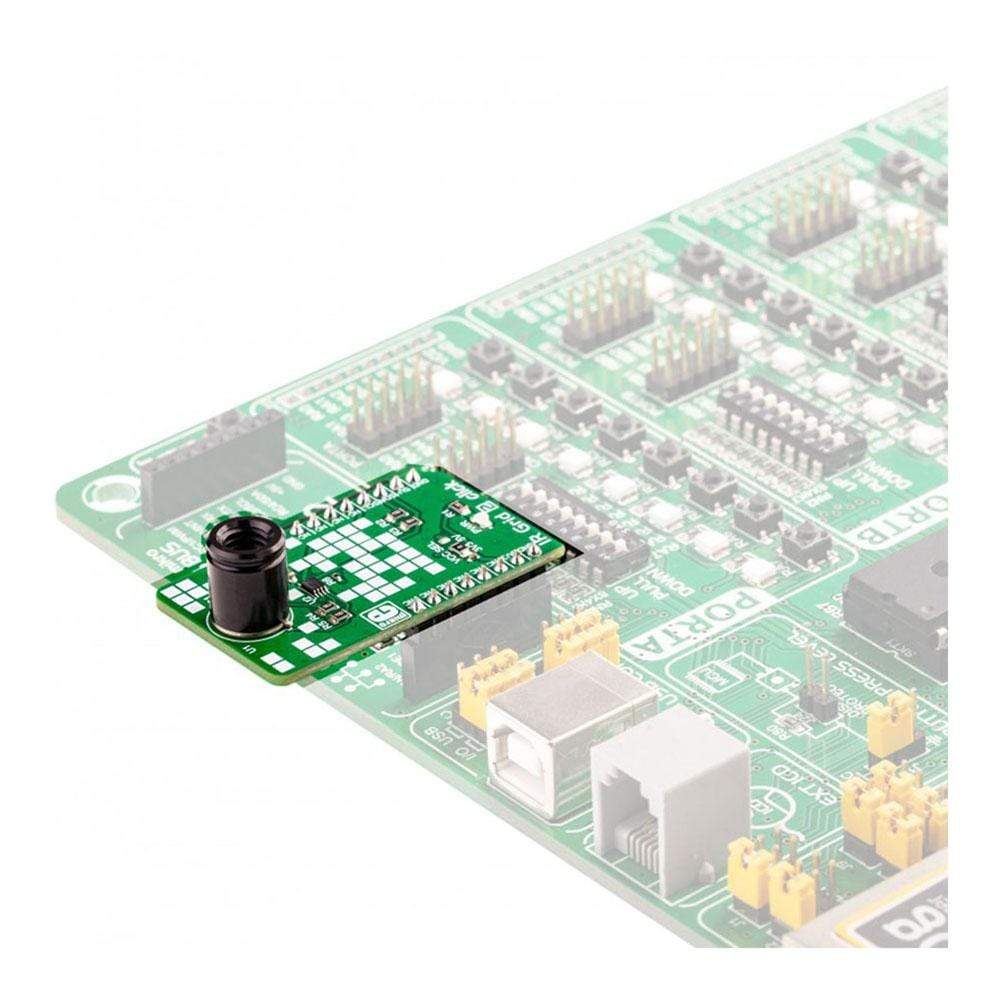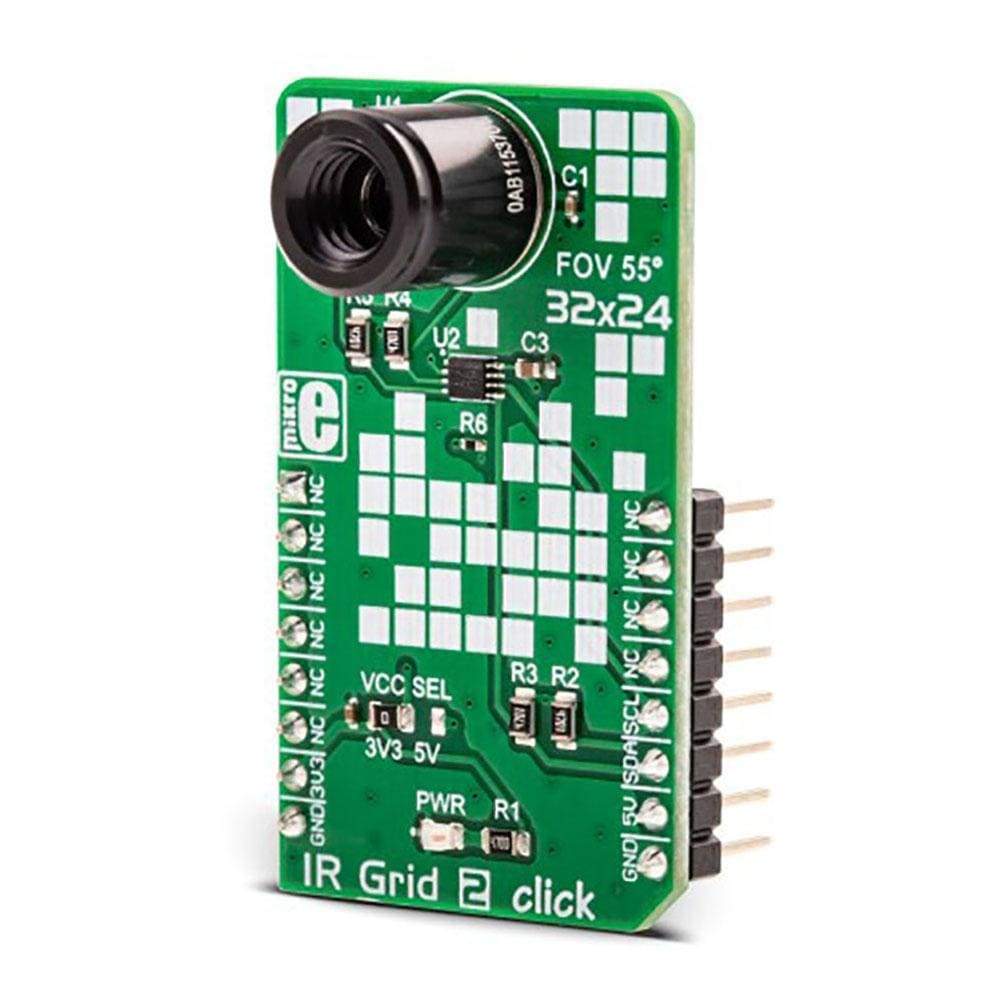
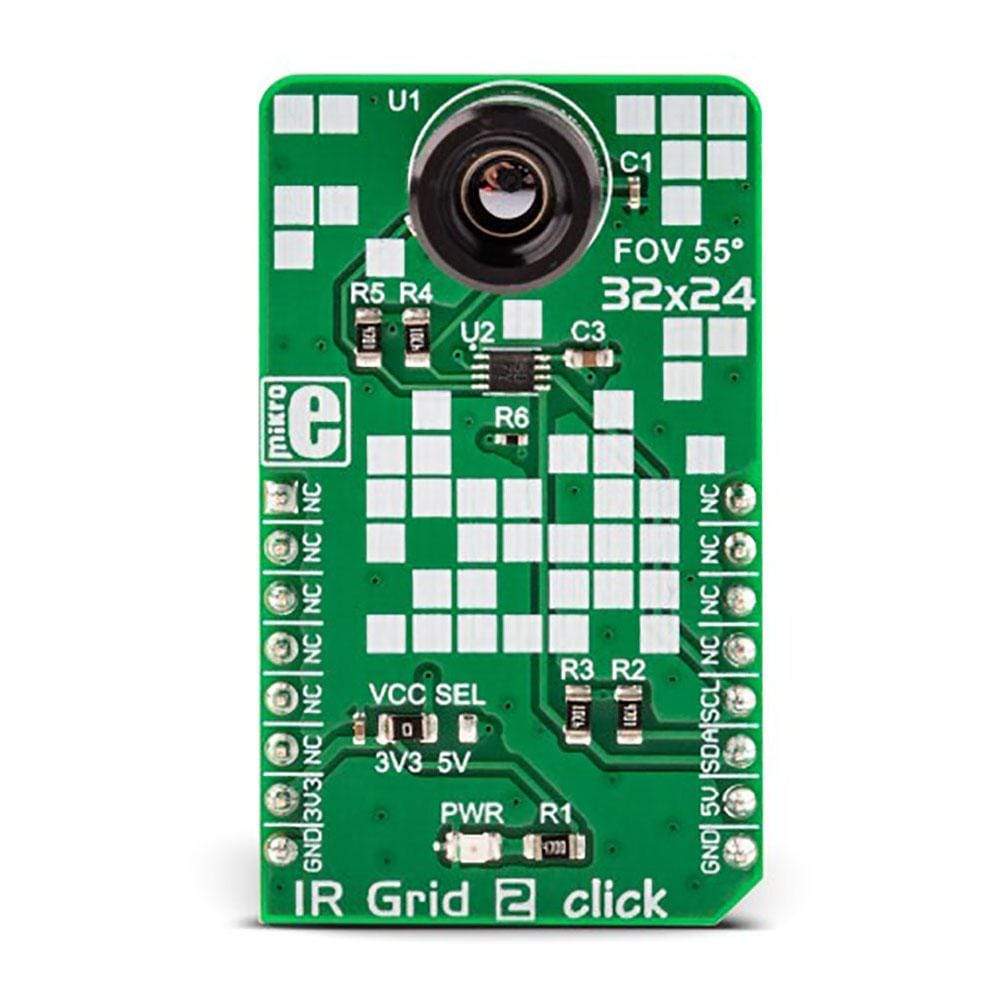
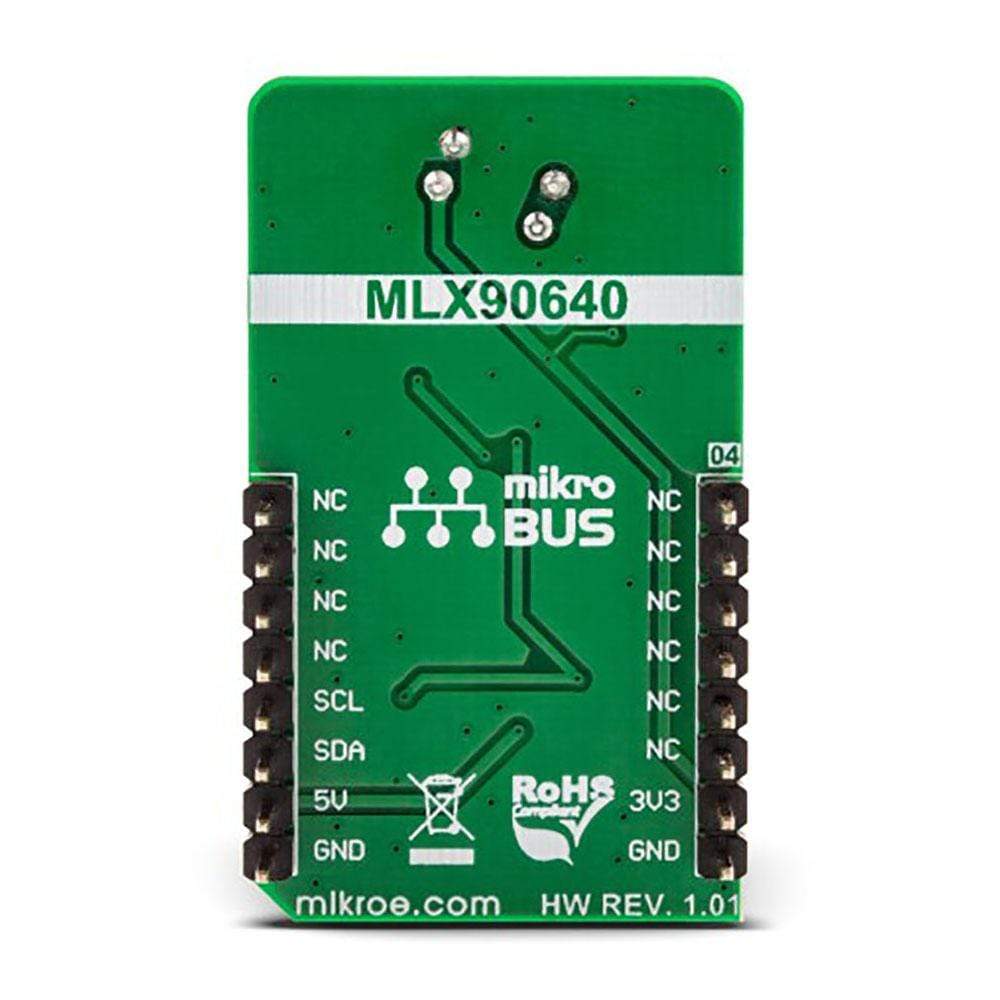
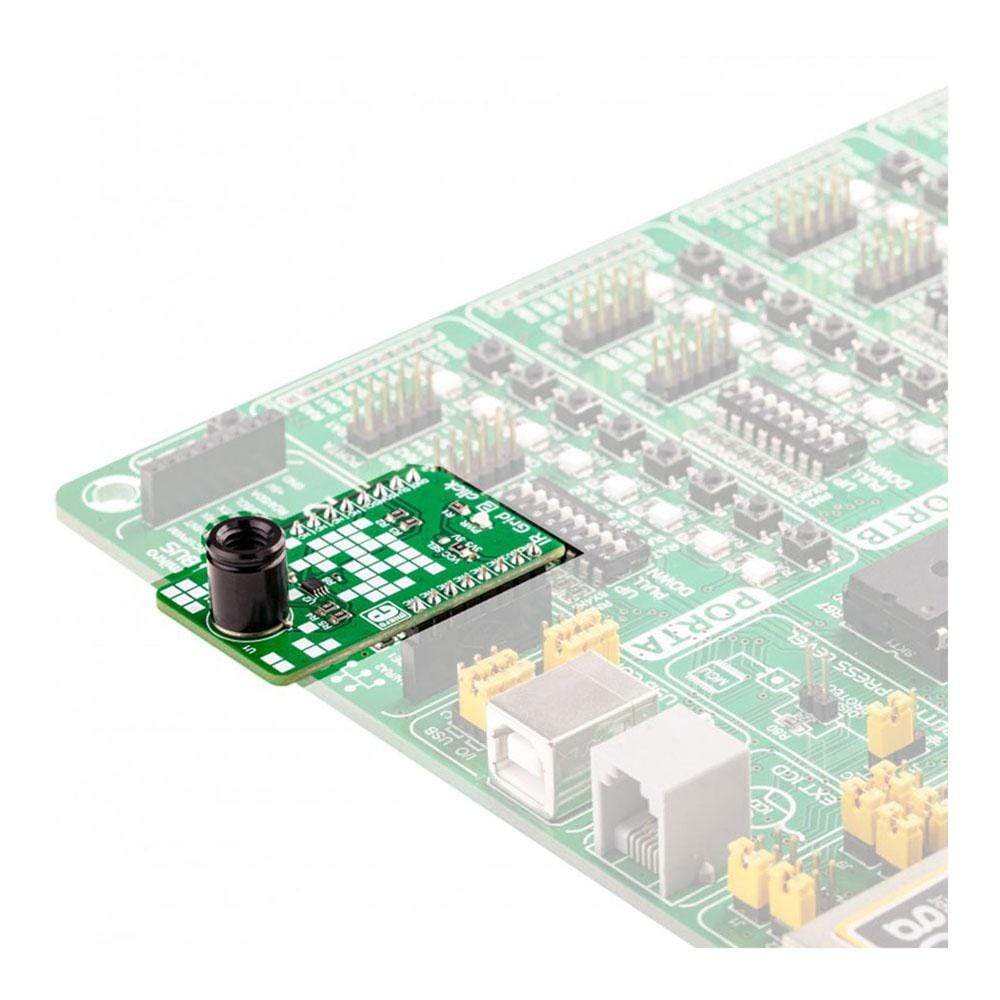
Key Features
Overview
The IR Grid 2 Click Board™ is a cutting-edge thermal imaging sensor designed for professional electronic engineers. This advanced module features the MLX90640ESF-BAB IR sensor, boasting an impressive array of 768 factory-calibrated IR elements arranged in a 32x24 pixel grid. With its ability to measure object temperatures up to 300°C within its local Field of View (FOV), this sensor offers exceptional thermal imaging capabilities.
Housed in an industry-standard TO39 package, the sensor requires only four pins for operation and includes 2Kbit of EEPROM for storing compensation and calibration parameters. The I2C compatible digital interface ensures seamless integration with a wide range of MCUs, making it versatile for various applications.
The IR Grid 2 Click Board™ provides a summed field of view of 55°x32° and can output up to 64 frames per second, delivering real-time thermal imaging performance. This high-resolution sensor is ideal for engineers developing advanced thermal monitoring systems, security applications, or industrial process control solutions.
Downloads
Das IR Grid 2 Click Board™ ist ein Wärmebildsensor. Es verfügt über ein Array von 768 sehr empfindlichen, werkseitig kalibrierten IR-Elementen (Pixeln), die in 32 Reihen mit je 24 Pixeln angeordnet sind. Jedes davon misst eine Objekttemperatur von bis zu 300 °C innerhalb seines lokalen Sichtfelds (FOV). Der auf diesem Click Board™ verwendete IR-Sensor Melexis MLX90640 hat nur vier Pins und ist im Industriestandard-TO39-Gehäuse montiert. Er ist mit 2 Kbit EEPROM zum Speichern der Kompensations- und Kalibrierungsparameter ausgestattet. Der MLX90640 IR-Sensor-Array-IC verfügt über eine I2C-kompatible digitale Schnittstelle, sodass er mit einer Vielzahl verschiedener MCUs verbunden werden kann.
Der auf dem IR Grid 2 Click Board™ verwendete Sensor bietet ein summiertes Sichtfeld von 55° x 32°. Der Sensor kann bis zu 64 Bilder pro Sekunde (FPS) ausgeben.
| General Information | |
|---|---|
Part Number (SKU) |
MIKROE-3194
|
Manufacturer |
|
| Physical and Mechanical | |
Weight |
0.021 kg
|
| Other | |
Country of Origin |
|
HS Code Customs Tariff code
|
|
EAN |
8606018713561
|
Warranty |
|
Frequently Asked Questions
Have a Question?
Be the first to ask a question about this.

